By
Eric Vandenbroeck and co-workers
A sketch of how Ukraine became Ukraine over 1,300 years
of history follows. Ukraine's modern borders are outlined in green throughout.
One of 7:
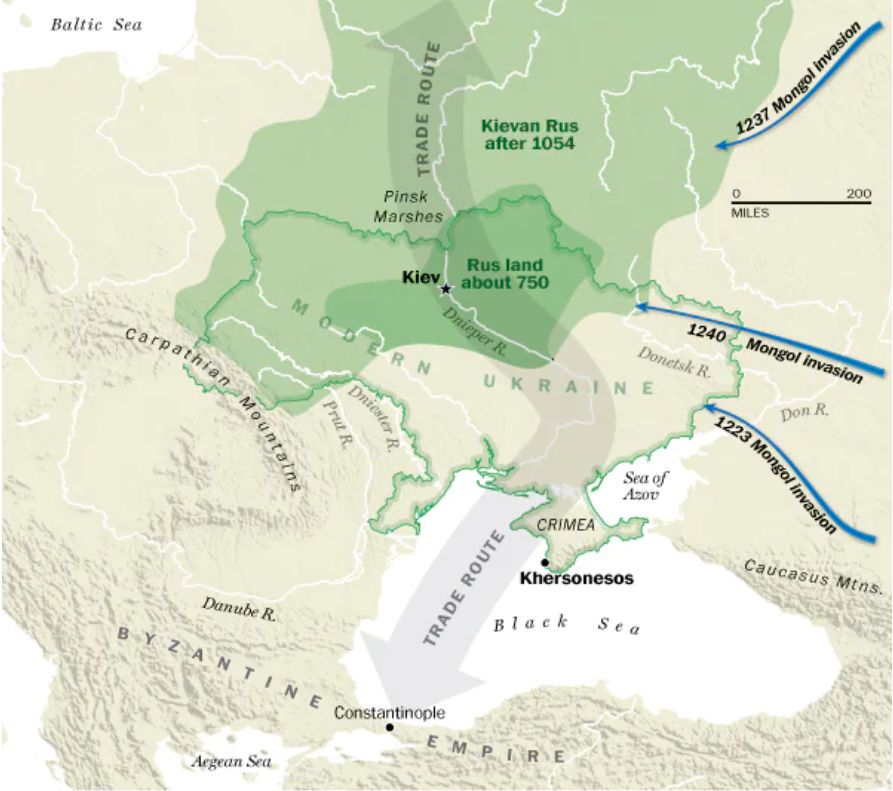
2 of 7 1650 to 1812
The "Rus" -- the people whose name got tacked on to
Russia -- were originally Scandinavian traders and settlers who made their
way from the Baltic Sea through the marshes and forests of Eastern Europe down
toward the fertile riverlands of what's now Ukraine.
Other Viking adventurers journeyed to Constantinople, the great
capital of the Byzantine Empire, to find their fortune -- sometimes as hired muscle.
The first major center of the "Rus" was at Kiev, established
in the 9th century. In 988, Vladimir, a prince of the Kievan Rus, was baptized
by a Byzantine priest in the old Greek colony of Khersonesos
on the Crimean coast. His conversion marked the advent of Orthodox
Christianity among the Rus and remains a moment of great nationalist
symbolism for Russians. Putin invoked this
older Vladimir in a speech last December when justifying his
annexation of Crimea.
Successive Mongol invasions beginning in the 13th century subdued
Kiev's influence, and led eventually to the rise of
other Rus settlements to the north, including Moscow. The Turkic
descendants of the Mongol Golden Horde formed their own Khanate along the
northern rim of the Black Sea.

3 of 7 1650 to 1812
Fast forward a few centuries, and you see how the land that's now
Ukraine lay on the margins of competing empires. It was a region of
permanent contest and shifting borders. The Polish-Lithuanian
Commonwealth -- which, at its peak, encompassed a vast
swath of Europe -- had dominated much of the land. Still, Ukraine would also
see the incursions of Hungarians, Ottomans, Swedes, bands of Cossacks, and
the armies of successive Russian czars.
In the 17th century, Russia and Poland split much of Ukraine along the
Dnieper River. Russia's advance continued a century later, during the rule of
Catherine the Great, who imagined her domains along the Black Sea
constituted "Novorossiya,"
or "new Russia" -- a term revived by the pro-Russian
separatists in eastern Ukraine. Back then, the Russian court harbored dreams of
collapsing the Ottoman empire and extending Moscow's reach to Istanbul
(formerly Constantinople) and even Jerusalem.
"Believe me, you will acquire immortal fame such as no other
sovereign of Russia ever had," said Grigoriy Potemkin, a prominent adviser
to Catherine the Great, when offering the empress counsel in 1780 on plans to wrest
Crimea away from Ottoman suzerainty. "This glory will open the way to
still further and greater glory."
Meanwhile, the partitions of Poland in the late 18th century led
to the city of Lviv -- once a central
regional hub and a center of Jewish culture in Eastern Europe --
falling under the rule of the Austro-Hungarian empire. It was there in the
mid-19th century where Ukrainian
nationalism began to take hold, rooted in the traditions
and dialects of the region's peasants and the aspirations of intellectuals who
had fled the oppressive rule of Russian rule further to the east.
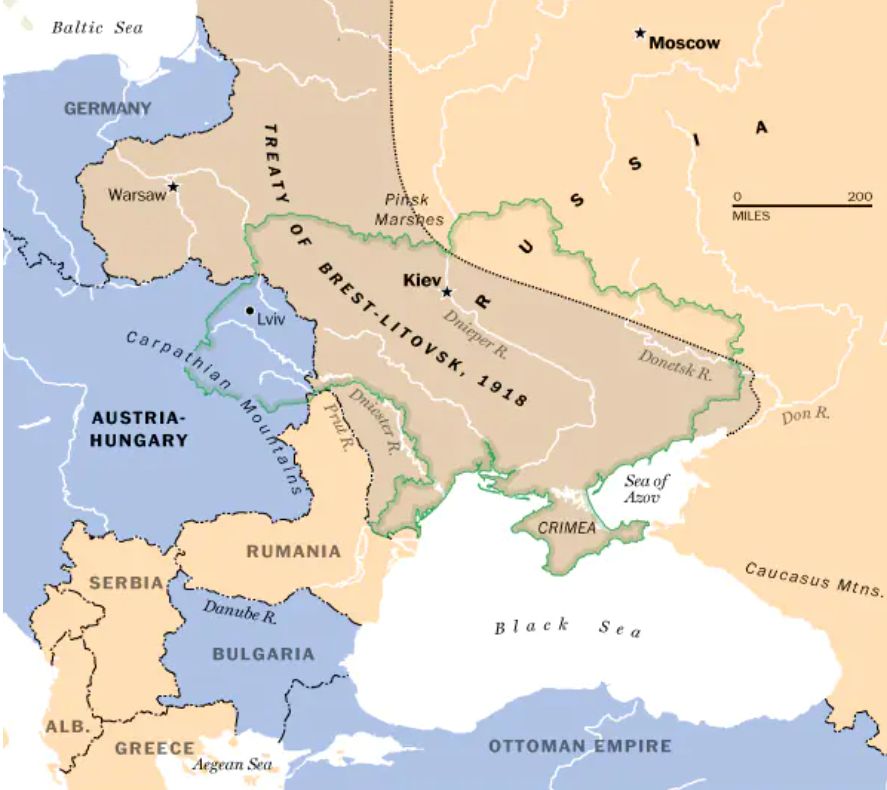
4 of 7. 1914 to 1918
World War I and the Bolshevik revolution in 1917 triggered more
traumas and upheaval in the areas that now constitute Ukraine. The new
Bolshevik government was desperate to end hostilities with Germany
and its allies and signed a treaty in Brest-Litovsk in
1918, ceding some of Russia's domains to the Central powers and
recognizing the independence of others, including Ukraine.
The treaty's terms were nullified by Germany's defeat later in the
year, but the genie of Ukrainian nationalism was out of the bottle.
Independence movements of various stripes sprung up in cities like Lviv, Kyiv,
and Kharkiv but were eventually swept away amid Russia's broader struggle for
power.
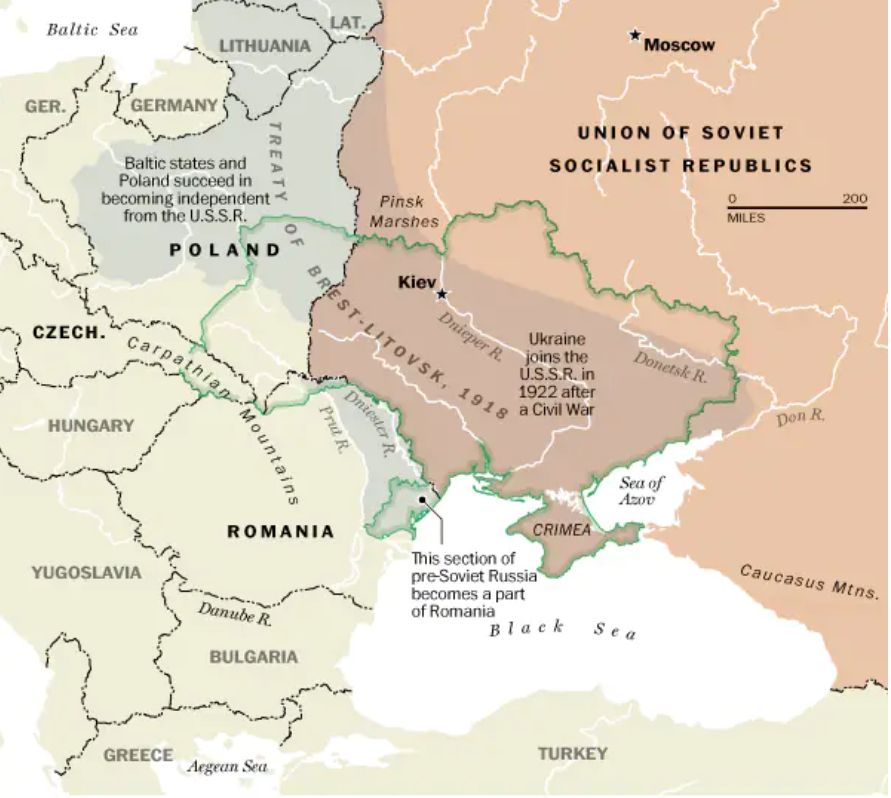
5 of 7. 1919 to 1922
At the end of World War I, a revived Poland reclaimed Lviv and a chunk
of western Ukraine. The country was one of the critical battlegrounds of the
Russian Civil War, pitting Bolshevik forces against an array of armies,
led by loyalists to the old czarist regime and other political
opportunists. After many bloodsheds -- and other battles with Poland -- the
Bolsheviks emerged
triumphantly and officially declared the Ukrainian
Socialist Soviet Republic in 1922.
The years that followed would be even more traumatic: in the late 1920s
and early 1930s, Ukraine suffered heavily under the rule of Soviet despot Josef
Stalin. A vast segment of Ukraine's rural population was displaced and
dispossessed by Stalin's aggressive collectivization policies. Artificial famine in 1932-3 led to the
deaths of some three million people.
Russian speakers from elsewhere immigrated to Ukraine's
hollowed-out towns and cities to make up the numbers, leaving a demographic
footprint that defines Ukraine's divisive politics to this day.
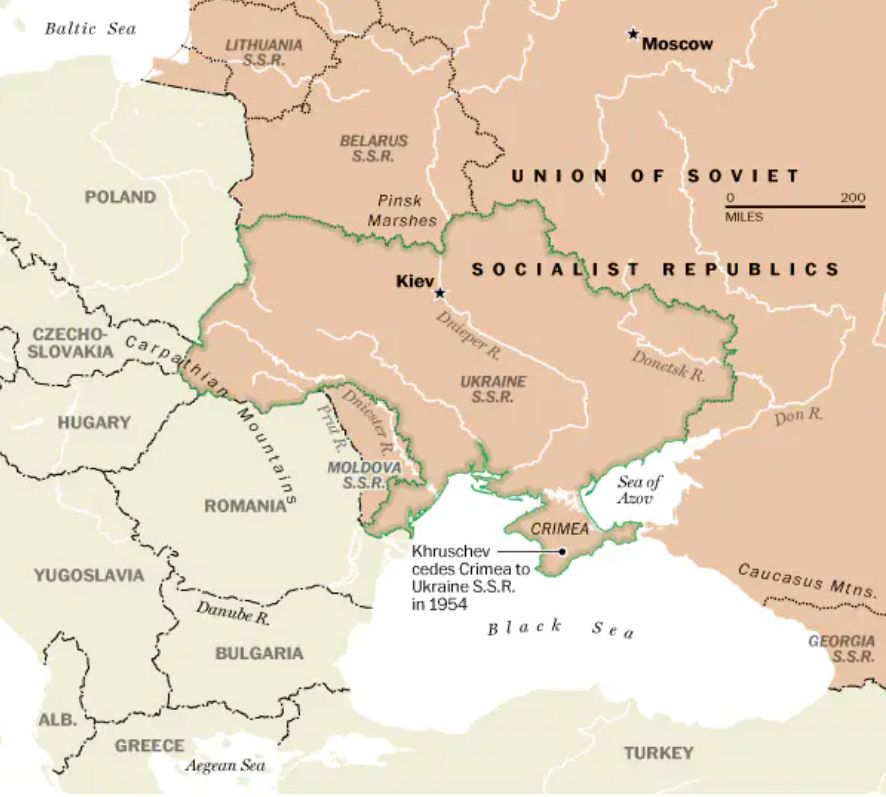
6 0f 7. 1945 to 1954
World War II ravaged Ukraine. Hitler and other Nazi strategists
imagined it could become the
breadbasket of their more enormous German empire.
Instead, it was a hideous, bloody warzone shaped by epic, grinding battles and
various massacres of civilian populations. Some Ukrainian nationalists
cooperated for a time with Nazi authorities, seeing the invasion as a means to achieve their independence. This was
particularly the case in western Ukraine, which until the end of World War II,
had no experience of Soviet rule.
The "fascism" of these Ukrainian
guerrillas is still a source of controversy now. Some militant elements in the
anti-Yanukovych protest movement actively embraced the legacy of Nazi-affiliated
war heroes. Meanwhile, the Kremlin's propaganda organs used
this history to label the new government in Kyiv as one riding
on a wave of "neo-Nazism."
After World War II, the Soviet Union claimed Lviv and its surrounding
lands in Ukraine's west. The Crimean peninsula, whose population was majority
Russian (after the mass deportation of Crimea's Tatars), was formally ceded from
Russia to the Ukrainian socialist republic in 1954 by Soviet leader Nikita
Khruschev.
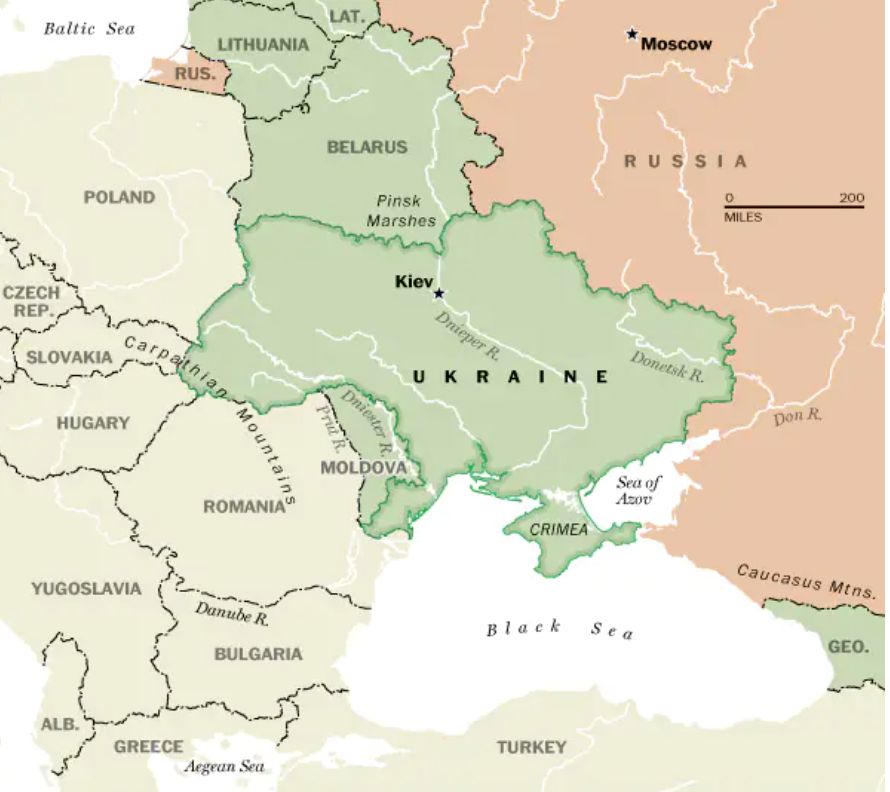
7 of 7. After the fall of the U.S.S.R.
With the collapse of the Soviet Union, Ukraine emerged as one many new
independent post-Soviet states in 1991. Its politics were riven by regional
divides between the country's west and the Russian-leaning east. Russia
chose to maintain a naval base in Sevastopol, the main port city in Crimea's
southern tip.

For updates click hompage here